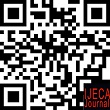Growth of Lettuce (Lactuca sativa L.) Plant in Light Organic Fertilizer Media From Goat and Rabbit Dirty
Abstract
Keywords
Full Text:
Download [PDF]References
Fitriyatno, Suparti, & Anif, S. (2011). Uji Pupuk Organik Cair Dari Limbah Pasar Terhadap Pertumbuhan Tanaman Selada (Lactuca sativa L) Dengan Media Hidroponik. Prosiding Seminar Nasional IX Pendidikan Biologi FKIP UNS, 635–641.
Hardinsyah, & Aries, M. (2012). Jenis Pangan Sarapan Dan Perannya Dalam Asupan Gizi Harian. Jurnal Gizi Dan Pangan, 7(2), 89–96.
Manullang, B. (2018). Pengaruh Strategi Pembelajaran Berbasis Media Interaktif Dan Gaya Berpikir Terhadap Kompetensi Teknologi Pengolahan Hasil Pertanian. Jurnal Teknologi Informasi & Komunikasi Dalam Pendidikan, 4(2). https://doi.org/10.24114/jtikp.v4i2.8759
Mas’ud, A. (2002). Efektifitas Trap Warna Terhadap Keberadaan Serangga Pada Pertanaman Budidaya Cabai di Kelurahan Sulamadaha Kecamatan P. Ternate. Journal of Chemical Information and Modeling, 53, 159. https://doi.org/10.1017/CBO9781107415324.004
Pardosi, A. H., Irianto, & Mukhsin. (2014). Respons Tanaman Sawi terhadap Pupuk Organik Cair Limbah Sayuran pada Lahan Kering. Prosiding Seminar Nasional Lahan Suboptimal, September, 979–587.
Pengaruh Komposisi Media Tanam Dan Konsentrasi Pupuk Daun Terhadap Pertumbuhan Dan Hasil Tanaman Selada (Lactuca sativa L.). 9(1), 39–45. https://doi.org/10.24815/floratek.v9i1.1375
Pertumbuhan dan Hasil Selada (Lactuca sativa L.) Hidroponik Diperkaya Fe. (2013). Pertumbuhan Dan Hasil Selada (Lactuca Sativa L.) Hidroponik Diperkaya Fe, 1(4), 68–77. https://doi.org/10.22146/veg.1597
Safuan, L. O., & Bahrun. (2012). Pengaruh Bahan Organik Dan Pupuk Kalium Terhadap Pertumbuhan Dan Produksi Tanaman Melon (Cucumis melo L .). Jurnal Agroteknos, 2(2), 69–76. http://faperta.uho.ac.id/agroteknos/Daftar_Jurnal/2012/2012-2-02-SAFUAN.pdf
Sunarjono, H. (2005). Sirsak & Srikaya. In Niaga Swadaya. https://doi.org/10.12928/kesmas.v4i3.1093
Taiz, L., & Zeiger, E. (2010). Photosynthesis: Carbon Reactions. Plant Physiology, 145–170.
U.S. Department of Agriculture (USDA), A. R. S. (2014). USDA National Nutrient Database for Standard Reference, Release 27. In Database. http://www.ars.usda.gov/nutrientdata
DOI: https://doi.org/10.31764/ijeca.v3i1.2043
Refbacks
- There are currently no refbacks.
Copyright (c) 2020 IJECA (International Journal of Education and Curriculum Application)

This work is licensed under a Creative Commons Attribution-ShareAlike 4.0 International License.
IJECA (International Journal of Education and Curriculum Application) already indexed:










___________________________________________________________________
| |
____________________________________________________________________
IJECA Publisher Office:







.jpg)




